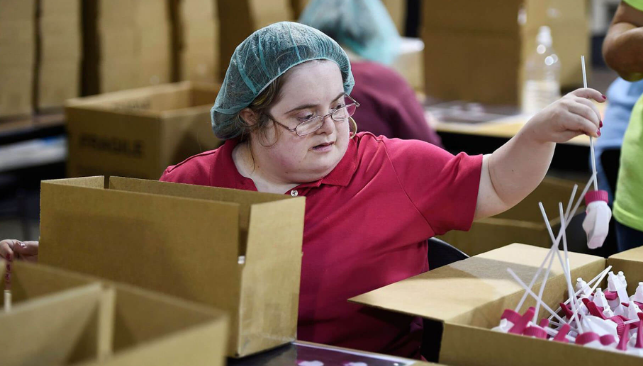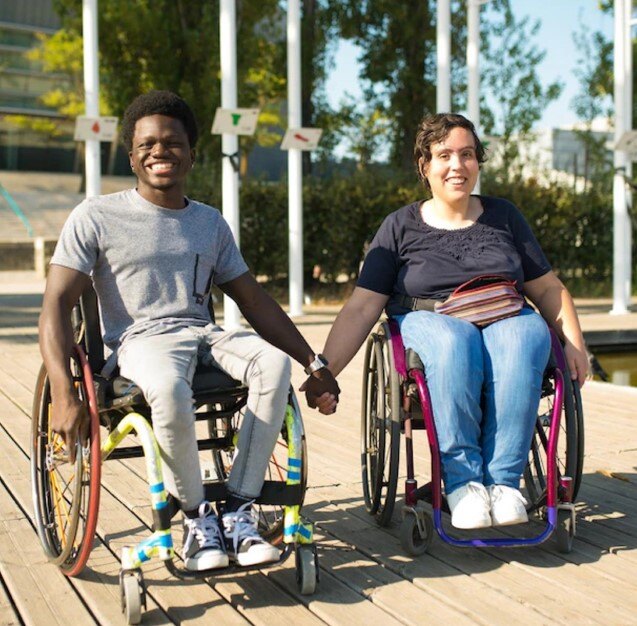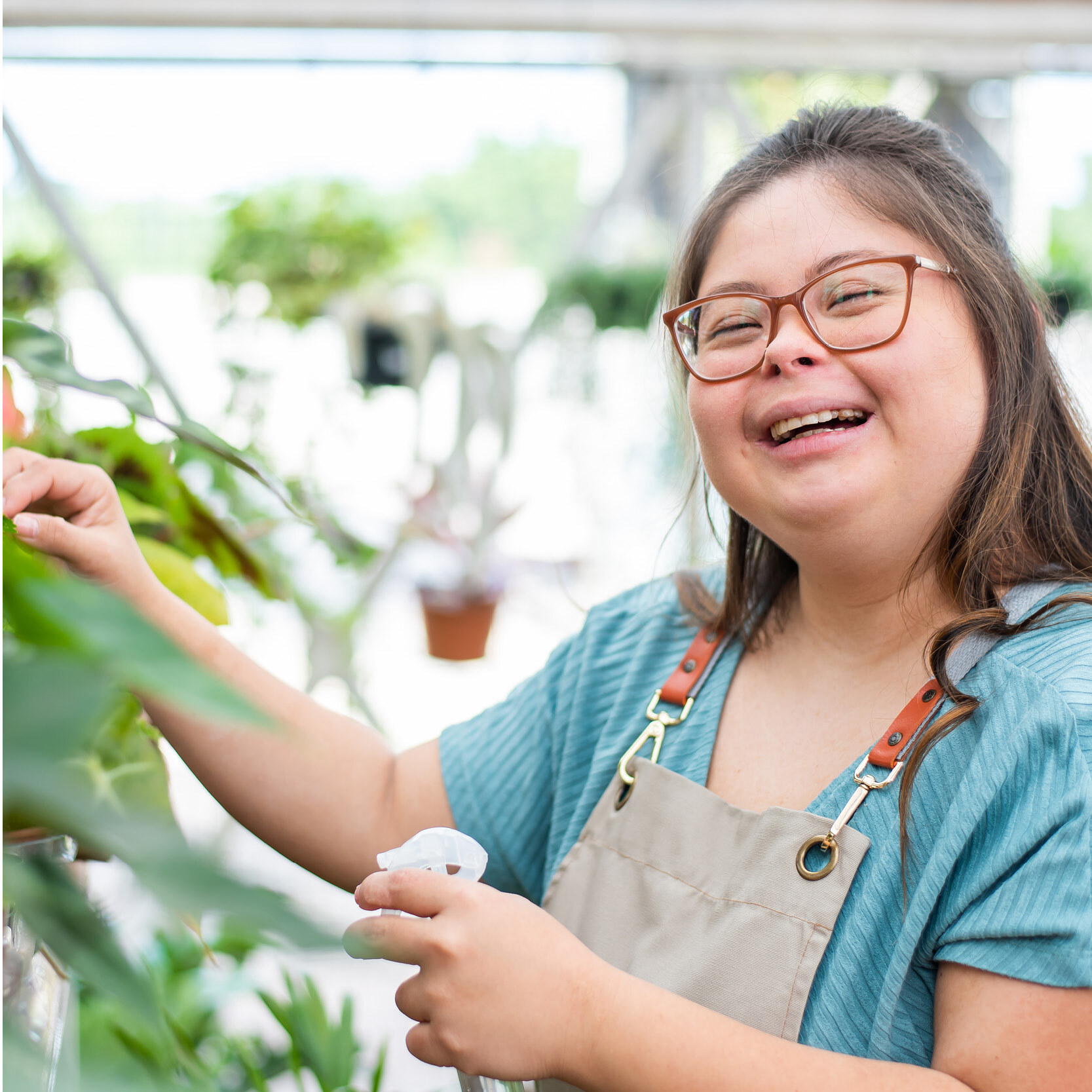Learning Center
Explore our comprehensive resources to find important information on programs, support options, and opportunities that empower individuals to thrive with confidence and independence.

Getting Started with Amivie

Experiences Over Things: Perfect Gifts for Adults with Developmental Disabilities
Gift-giving is about more than wrapping a present; it’s about bringing joy and creating meaningful moments. For adults with...

Reflecting on the International Day of Persons with Disabilities
December 3 marked the annual celebration of the International Day of Persons with Disabilities (IDPD)—a day dedicated to...

Feds Weighing Changes to Subminimum Wage Program
Federal officials are rethinking the government program that allows people with disabilities to be paid less than minimum...

North Carolina Behavioral Crisis Treatment for Alliance Health Members
Behavioral health crisis situations are serious but do not always require a trip to the emergency room. Alliance provides...

April is Autism Awareness and Acceptance Month
April is recognized as Autism Awareness and Acceptance Month. It’s a time dedicated to increasing public awareness about...

World Down Syndrome Day
World Down Syndrome Day is an internationally recognized observance day which falls on March 21st each year. The theme for...


Human Rights Day
Today marks the 75th anniversary of the signing of the Universal Declaration on Human Rights and the 30th anniversary of the...

International Day of Persons with Disabilities
According to the United Nations, the world population is over eight billion people, and more than one billion people, or...

The Importance of Daily Life Skills for the IDD
Individuals with developmental or intellectual disabilities often need additional help to learn daily life skills. The more...

Bullying and The IDD Individual
This is the time of year where we are all back in school or trying new programs to fill the days of disabled individuals...

Abuse of the Intellectually and Developmentally Delayed Individual
Individuals with intellectual and or developmental disabilities are, unfortunately, more likely to be mentally, physically,...

The Importance of Community Inclusion for I/DD Children and Adults
Inclusion of people with disabilities in everyday activities is important for everyone, not just the person with the IDD....

Adults with Intellectual and Developmental Disabilities and Employment
Adults with intellectual and developmental disabilities can make incredible employees for companies both big and small. This...

April Is Care Workers Recognition Month
On Saturday, President Joe Biden released a Proclamation declaring April Care Workers Recognition Month. Here is his decree...

3 Common Challenges After a TBI and How to Address Them
A TBI (traumatic brain injury) can temporarily or permanently impact many different areas of functioning. Depending on the...

What is the Difference Between Intellectual and Developmental Disabilities?
The term “Intellectual and Developmental Disability” (I/DD) is designed to be as inclusive as possible. This diverse...

Inclusive Family Activities for Kids with I/DD
Fun for the entire family can sometimes feel like a tall order. Kids with intellectual and developmental differences who are...
How to Make Your Home More Sensory Friendly
We know that each child is unique, therefore autism and autism spectrum disorder can manifest in many ways. One of the...
4 Tips for Helping Kids with Special Needs Socialize
Interpersonal connections are important for everyone, but they may be especially critical to the healthy development of...

Promoting Dignity in the I/DD Community
The differences in our abilities make us unique, but they don’t define our worth.
Job Search Tips for the I/DD Community
It’s about so much more than the daily grind: the right job can be a source of tremendous satisfaction and personal...
6 Sensory-Friendly Summer Activities
As the weather gets warmer and the days get longer, it’s time to plan some summer fun.
Advanced Options, LLC. Merges with the Community Based Care Family of Providers
For Immediate Release
Carolina’s Home Care, Inc. Merges with the Quality Home Staffing and the CBHomecare family of providers
Carolina’s Home Care, Inc., an organization dedicated to providing quality services to the individuals they serve, is...
Personal Care, Inc. Merges with the Community Based Care Family of Providers
Personal Care, Inc., an organization dedicated to providing quality services to the individuals they serve, is pleased to...
Salem Homes of Florida Joins CBC Suncoast New Options
CBC Suncoast New Options is pleased to announce the addition of Salem Homes to the CBC family. Salem operates 14 ICF/DD...
Mental Health and the I/DD Community
With the recent pandemic, many of us have experienced some impact on our mental health. We have faced loss, uncertainty and...
Stay at Home Senior Care Merges with Quality Home Staffing
For Immediate Release
Stay at Home Senior Care Merges with Quality Home
Staffing and the Community Based Care Family of...
Important Info on COVID-19 Vaccine Safety
With the emergence of the COVID-19 vaccine, many people began to see the light at the end of a very long and dark tunnel....
How Do You Celebrate Holidays This Year During COVID-19?
What do you do about the holidays this year?
We have had to remain socially distanced for many months and are yearning to...

What is the N.C. Innovations Waiver?
About the N.C. Innovations Waiver and What’s New
The Home and Community Based Services Waiver for North Carolina is called...
Fall Prevention Awareness Week
Falls are common, especially among older and disabled adults. According to the National Council on Aging, they are the...
CBC Hurricane Preparedness
Hurricane season is one of the times when we need to be on guard and prepared. We want to make sure those we serve and our...
Quality Home Staffing, Inc. Merges with the Community Based Care Family of Providers
|
Keeping Everyone Up To Date On Our Response To COVID-19
We have all been impacted by the COVID-19 pandemic in some way. Some have been inconvenienced, while others have had their...